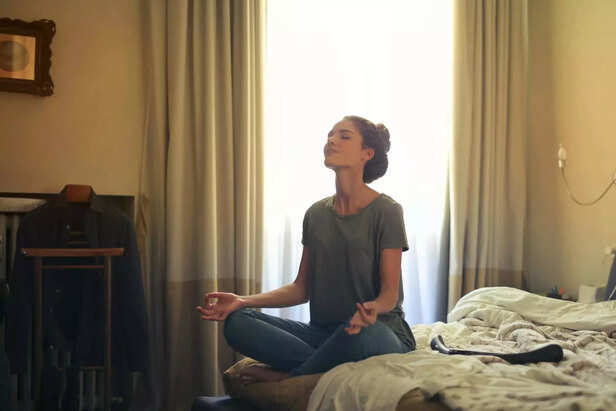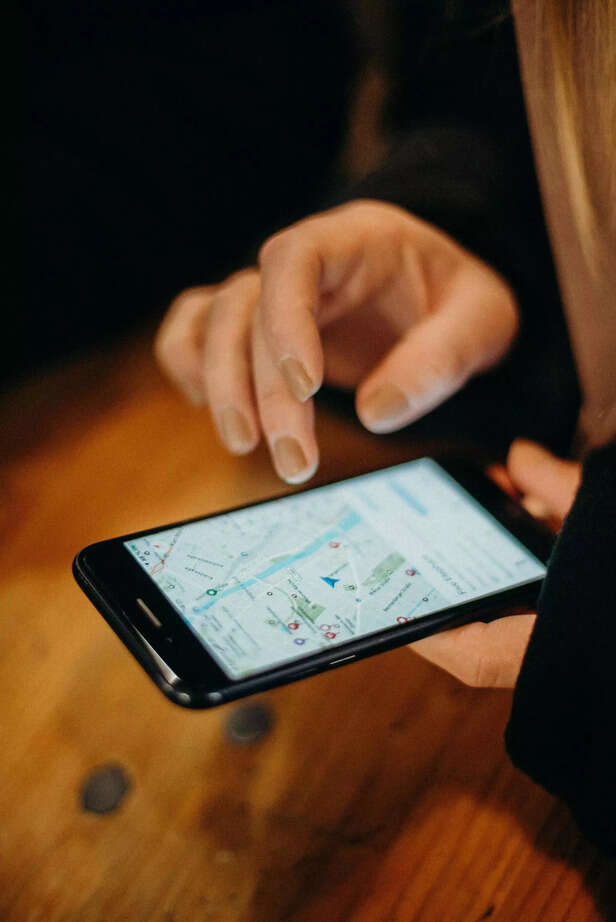Burnt Out and Over It? Why Millennials Are Turning to Ancient Wisdom Instead of Therapy
Ankita Rai | Wed, 11 Jun 2025
In a world of constant connectivity and rising burnout, millennials are turning to ancient spiritual teachings to reclaim their mental well-being. Blending centuries-old practices like meditation, yoga, and Vedic philosophy with modern digital tools, they’re creating a new movement called “Digital Dharma.” This fusion offers not just relief from anxiety and stress but a deeper sense of purpose and balance. Accessible, personalized, and rooted in holistic healing, Digital Dharma is more than a trend—it’s a cultural shift that reflects a generation’s search for inner peace in an increasingly chaotic world.
( Image credit : Pexels )
Photo:
Millennials are perpetually connected—texting, scrolling, and multitasking their way through weekdays and weekends. But beneath this hyper-connected surface, many are quietly searching for something more. Not the next viral wellness hack, but something deeper. Rather than fleeing from the noise, they’re embracing silence. Instead of optimizing the self, they’re striving to understand it. This shift, often called Digital Dharma, signals a meaningful pivot: using technology not just to escape stress, but to rediscover the self.
The Burnout Generation

This generation grew up online. They witnessed the rise of social media, navigated economic instability, and now juggle relentless responsibilities. Burnout, anxiety, and loneliness have become familiar companions. Therapy and mental health awareness have gained momentum, yet many feel an emotional and spiritual gap. That gap isn’t always medical or psychological it is often a spiritual void that modern systems don’t fully address.
Rediscovering Ancient Tools for Inner Peace

Long before wellness apps and life coaches, spiritual traditions across India offered frameworks for true mental peace. Texts like the Bhagavad Gita, the Upanishads, and yogic teachings offer not just spiritual ideals but actionable strategies detachment, presence, surrender, and purpose. These aren’t abstract doctrines; they’re psychological blueprints. Today, millennials are realizing that ancient doesn’t mean outdated. In fact, these teachings feel more urgent now than ever before.
What Is Digital Dharma?

Digital Dharma is the integration of timeless wisdom with modern technology. It’s not about turning your phone into a spiritual altar, but about grounding ancient practices in daily digital life. Imagine meditation apps that guide users through Gita verses, journaling tools that prompt reflective self-inquiry, or podcasts that decode Vedic texts for 21st-century minds. This isn’t spiritual escapism it’s spiritual integration. Technology becomes a tool to make dharma right living accessible in today’s overstimulated world.
Why This Speaks to Millennials

Millennials are adopting this shift for several key reasons. First, it’s accessible. No need to retreat to an ashram wisdom is available through an app, video, or online class. Second, it’s personalized. With AI and content algorithms, one’s spiritual journey can be tailored to personal moods and phases. Third, it’s communal. Virtual sanghas, Zoom-based study groups, and global conversations on ancient texts build connections deeper than likes and follows. Most importantly, it’s preventive. Rather than waiting for life to fall apart, millennials are turning to tools that help maintain balance before breakdown.
Where Science and Tradition Meet

Modern neuroscience is beginning to affirm what rishis intuited centuries ago. Meditation changes brain function. Pranayama calms the nervous system. Daily gratitude alters emotional response patterns. These traditional practices, once preserved in oral lineage and scriptures, are now being validated through fMRI scans and peer-reviewed journals. Technology doesn’t replace the practice it strengthens it. Whether it’s a breathwork tracker, habit-forming app, or daily spiritual prompts, digital tools make these habits easier to maintain and integrate.
The Risks of Shallow Spirituality

However, there is a risk. As spirituality becomes trendier, its depth can get diluted. Ancient mantras become playlist fillers. Profound ideas are reduced to aesthetic quotes. The problem isn’t digital it’s superficiality. Real practice requires effort, stillness, and sincerity. You can’t scroll your way to inner peace. You have to sit with the discomfort, listen to the silence, and let it change you from the inside.
What’s Next: A New Paradigm of Wellness

Digital Dharma isn’t a passing trend it represents a deeper redefinition of wellness. Millennials aren’t rejecting modernity; they’re reshaping it. They are finding ways to live fully in a digital world while staying rooted in timeless truths. In doing so, they are shifting the wellness narrative from quick fixes to deeper alignments. From avoiding discomfort to embracing growth. From chasing meaning outside to discovering it within.
How to Start Your Own Digital Dharma Journey

If this resonates with you, start simple. Use a journaling app inspired by Vedic inquiry. Meditate for ten minutes with purpose, not perfection. Subscribe to a podcast that explores Eastern philosophy in a relatable way. Join an online study circle or digital satsang. And most importantly, carve out screen-free moments each day to just breathe, walk, and reflect.
Conclusion: The Inner Search Continues
In an age of noise, speed, and stimulation, Digital Dharma offers a rare middle path. It doesn’t demand that we unplug from the world it asks us to plug back into its essence. As millennials blend tradition with technology, they remind us that the path to mental well-being isn’t always about escape. It’s often about returning through the screen, through silence, and ultimately, through the self.
Unlock insightful tips and inspiration on personal growth, productivity, and well-being. Stay motivated and updated with the latest at My Life XP.
The Burnout Generation

this generation is burning outp
( Image credit : Pexels )
This generation grew up online. They witnessed the rise of social media, navigated economic instability, and now juggle relentless responsibilities. Burnout, anxiety, and loneliness have become familiar companions. Therapy and mental health awareness have gained momentum, yet many feel an emotional and spiritual gap. That gap isn’t always medical or psychological it is often a spiritual void that modern systems don’t fully address.
Rediscovering Ancient Tools for Inner Peace

rediscovering inner peace
( Image credit : Pexels )
Long before wellness apps and life coaches, spiritual traditions across India offered frameworks for true mental peace. Texts like the Bhagavad Gita, the Upanishads, and yogic teachings offer not just spiritual ideals but actionable strategies detachment, presence, surrender, and purpose. These aren’t abstract doctrines; they’re psychological blueprints. Today, millennials are realizing that ancient doesn’t mean outdated. In fact, these teachings feel more urgent now than ever before.
What Is Digital Dharma?

digital dharma
( Image credit : Pexels )
Digital Dharma is the integration of timeless wisdom with modern technology. It’s not about turning your phone into a spiritual altar, but about grounding ancient practices in daily digital life. Imagine meditation apps that guide users through Gita verses, journaling tools that prompt reflective self-inquiry, or podcasts that decode Vedic texts for 21st-century minds. This isn’t spiritual escapism it’s spiritual integration. Technology becomes a tool to make dharma right living accessible in today’s overstimulated world.
Why This Speaks to Millennials

millennials feel connected
( Image credit : Pexels )
Millennials are adopting this shift for several key reasons. First, it’s accessible. No need to retreat to an ashram wisdom is available through an app, video, or online class. Second, it’s personalized. With AI and content algorithms, one’s spiritual journey can be tailored to personal moods and phases. Third, it’s communal. Virtual sanghas, Zoom-based study groups, and global conversations on ancient texts build connections deeper than likes and follows. Most importantly, it’s preventive. Rather than waiting for life to fall apart, millennials are turning to tools that help maintain balance before breakdown.
Where Science and Tradition Meet

digital dharma
( Image credit : Pexels )
Modern neuroscience is beginning to affirm what rishis intuited centuries ago. Meditation changes brain function. Pranayama calms the nervous system. Daily gratitude alters emotional response patterns. These traditional practices, once preserved in oral lineage and scriptures, are now being validated through fMRI scans and peer-reviewed journals. Technology doesn’t replace the practice it strengthens it. Whether it’s a breathwork tracker, habit-forming app, or daily spiritual prompts, digital tools make these habits easier to maintain and integrate.
The Risks of Shallow Spirituality

shallow spirituality
( Image credit : Pexels )
However, there is a risk. As spirituality becomes trendier, its depth can get diluted. Ancient mantras become playlist fillers. Profound ideas are reduced to aesthetic quotes. The problem isn’t digital it’s superficiality. Real practice requires effort, stillness, and sincerity. You can’t scroll your way to inner peace. You have to sit with the discomfort, listen to the silence, and let it change you from the inside.
What’s Next: A New Paradigm of Wellness

digital wellness
( Image credit : Pexels )
Digital Dharma isn’t a passing trend it represents a deeper redefinition of wellness. Millennials aren’t rejecting modernity; they’re reshaping it. They are finding ways to live fully in a digital world while staying rooted in timeless truths. In doing so, they are shifting the wellness narrative from quick fixes to deeper alignments. From avoiding discomfort to embracing growth. From chasing meaning outside to discovering it within.
How to Start Your Own Digital Dharma Journey

digital well being
( Image credit : Pexels )
If this resonates with you, start simple. Use a journaling app inspired by Vedic inquiry. Meditate for ten minutes with purpose, not perfection. Subscribe to a podcast that explores Eastern philosophy in a relatable way. Join an online study circle or digital satsang. And most importantly, carve out screen-free moments each day to just breathe, walk, and reflect.
Conclusion: The Inner Search Continues
In an age of noise, speed, and stimulation, Digital Dharma offers a rare middle path. It doesn’t demand that we unplug from the world it asks us to plug back into its essence. As millennials blend tradition with technology, they remind us that the path to mental well-being isn’t always about escape. It’s often about returning through the screen, through silence, and ultimately, through the self.
Unlock insightful tips and inspiration on personal growth, productivity, and well-being. Stay motivated and updated with the latest at My Life XP.
Frequently Asked Questions (FAQs)
- What is Digital Dharma?Digital Dharma refers to the fusion of ancient spiritual wisdom with modern digital tools to support mental and emotional well-being.
- Why are millennials drawn to ancient teachings for mental health?Millennials seek deeper, holistic healing beyond conventional therapy, and ancient practices offer timeless tools for inner balance.
- Can digital platforms really support spiritual growth?Yes, when used mindfully, digital tools can make spiritual practices more accessible, personalized, and consistent.










